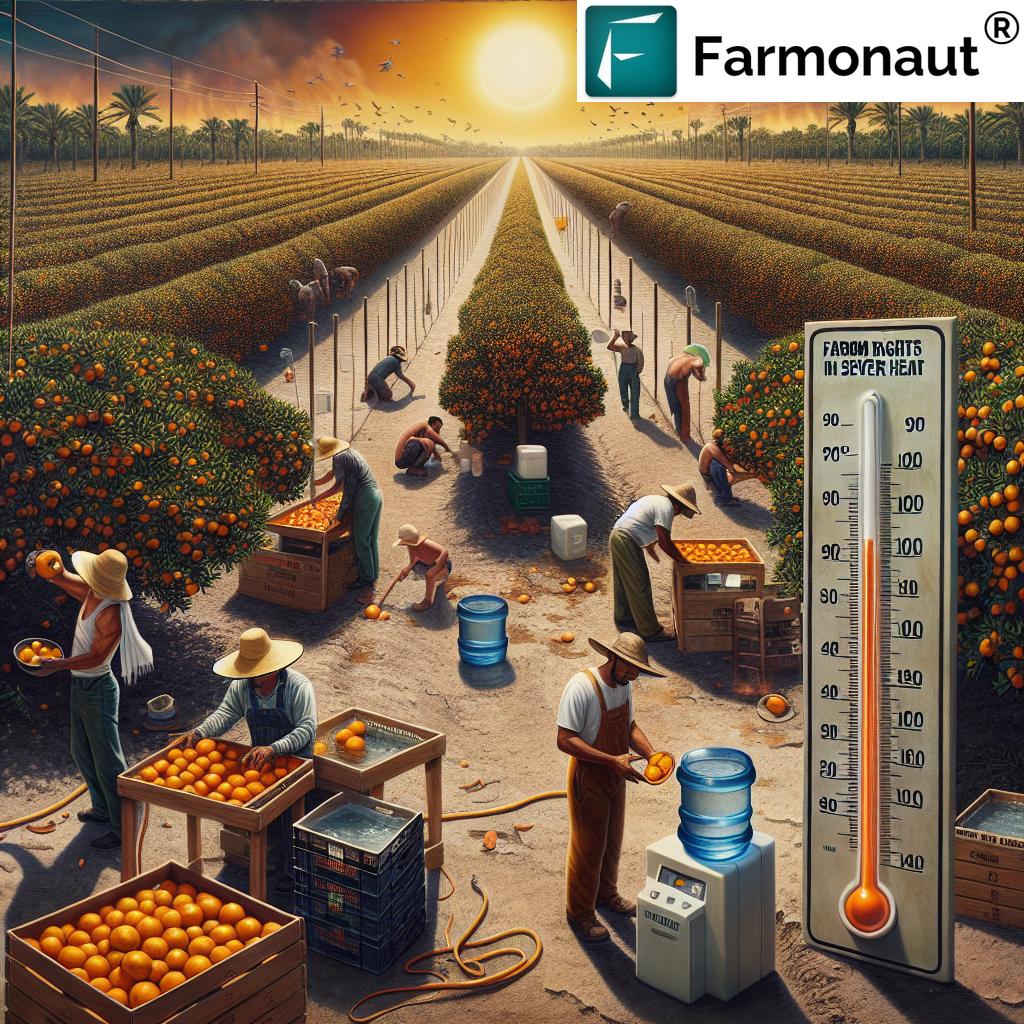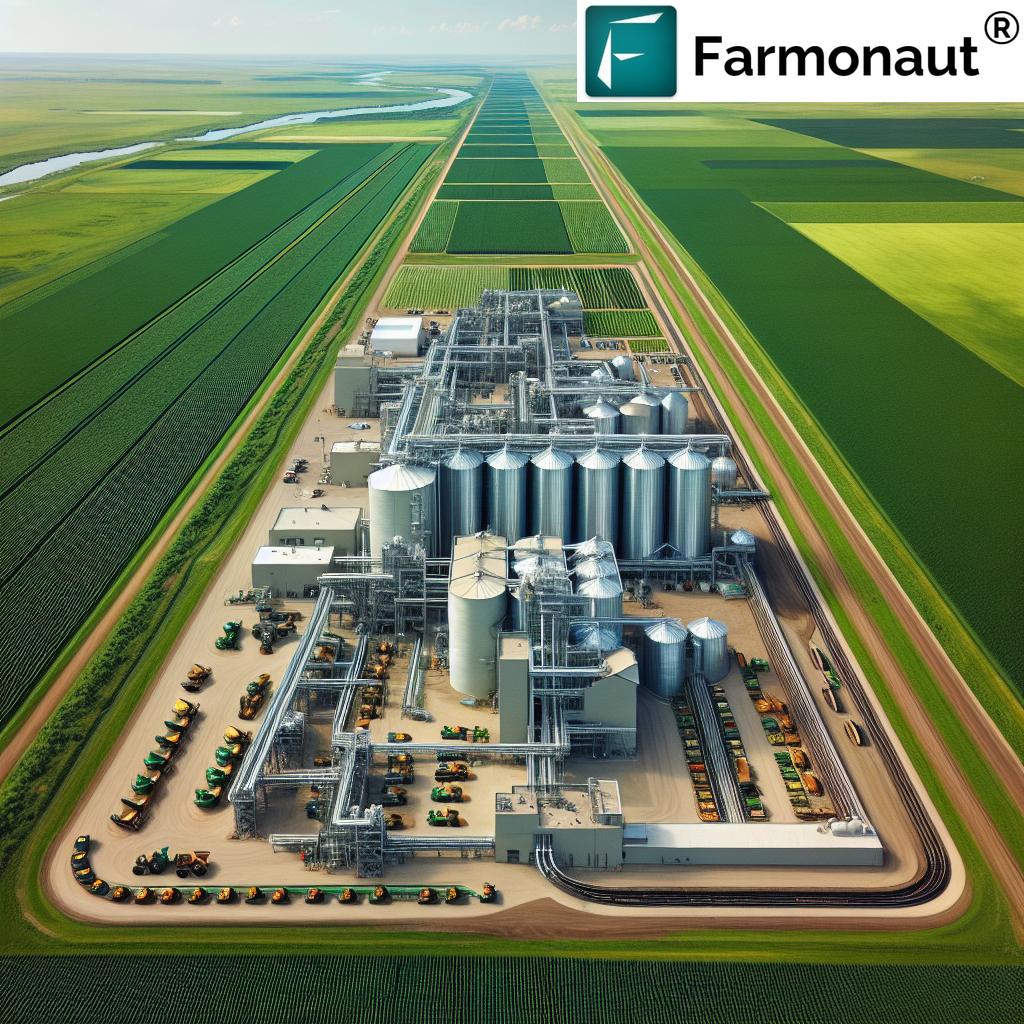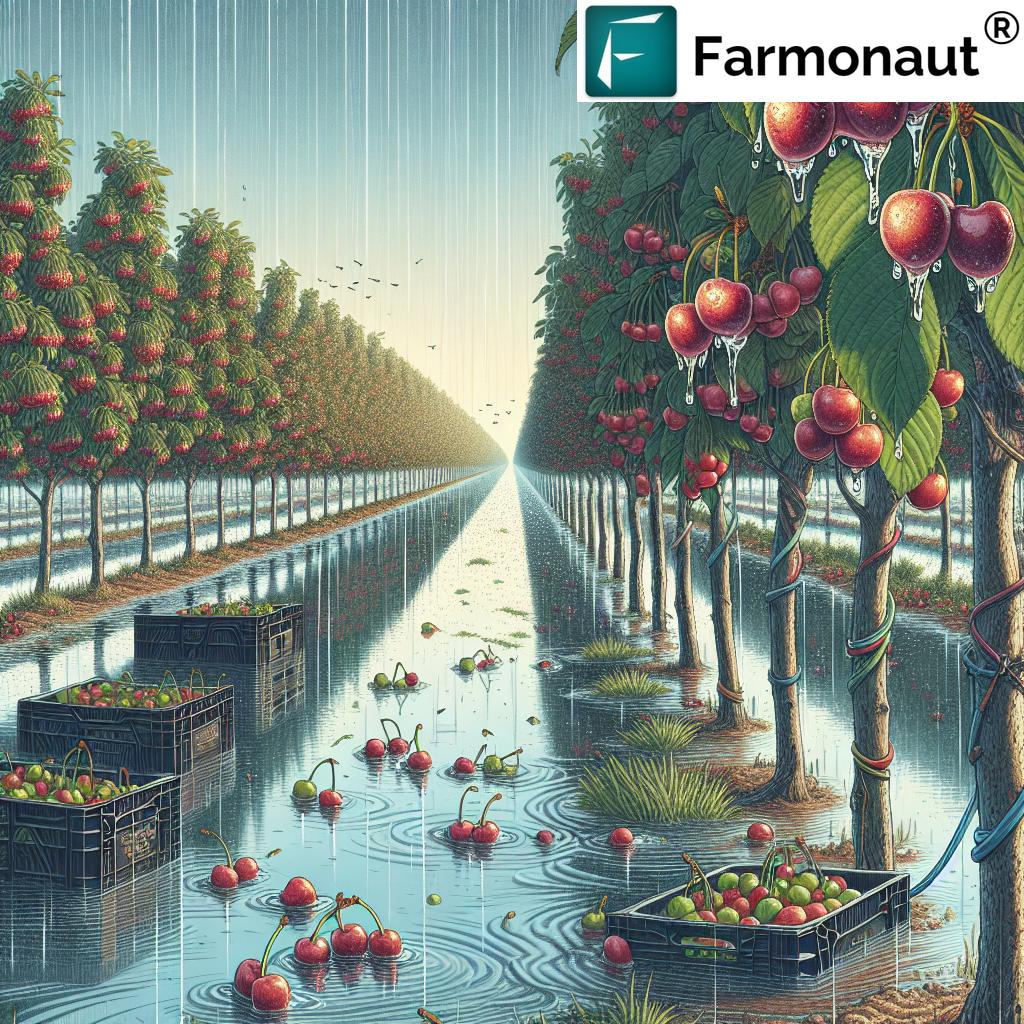Potash Fertilizer Tariffs: 5 Key Impacts for Seattle Farmers
Introduction: The Stakes for Seattle Farmers
Seattle, WA farmers face an unpredictable journey in ensuring food security. The agricultural sector is shaped by ever-changing weather conditions, input price fluctuations, and evolving trade policies. Recently, potash fertilizer tariffs have come to the forefront, affecting crop yields, production costs, and ultimately, the sustainability of local farming. The potash fertilizer tariffs, introduced first at 25 percent and adjusted to 10 percent, are a critical concern, especially since the U.S. imports nearly 85% of its potash from Canada.
Against this backdrop, let’s uncover how these tariffs influence Seattle farmers, with a special focus on corn growers, fertilizer input costs, soil health, support from the USDA, and the expansion of regenerative agriculture practices.
“Seattle farmers saw potash fertilizer prices rise by up to 30% after tariffs were introduced in 2022.”
Understanding Potash Fertilizer Tariffs: Definition and Relevance to Seattle, WA Agriculture
Before diving into the impact of tariffs on farmers, it’s essential to understand what potash fertilizer is, how tariffs function, and why this policy shift hits the Pacific Northwest so hard.
What Is Potash?
Potash refers to various mined and manufactured salts that contain potassium in a water-soluble form. The most common type is potassium chloride—a critical nutrient used in fertilizers to maximize crop yield and improve plant health. Potassium helps water and nutrients move through plants, making it vital for crops with significant nutrient needs, such as corn, soybeans, tomatoes, and fruit crops.
Most fertilizers contain a blend of nitrogen, phosphorus, and potassium—labeled N-P-K—where potash supplies the “K” (potassium).
How Do Tariffs Work?
A tariff is a tax imposed on imported goods. For American farmers, tariffs on potash mean higher fertilizer input prices, since potash imports—especially from Canada—become more expensive. The U.S. relies on Canada for at least 85 percent of its potash needs, and Seattle, WA, as a port and agricultural hub, is deeply entwined in this supply chain.
The Trump administration’s tariff introduction and subsequent reduction created uncertainty, influencing both immediate input costs and long-term farming strategies. Understanding the potash imports from Canada is crucial for local planning and policy response.
Who Is Most Affected?
- Commodity crop growers (notably corn and soybeans)
- Vegetable and fruit growers needing potassium-rich soil
- Organic and smallholder farmers sensitive to any input cost fluctuations
- Cooperatives and agricultural service providers managing large acreages
1. Input Prices Surge: Farmer Expenses and Profit Margins
Seattle farmers track every input cost. Fertilizer expenses—including those for potassium fertilizer for crops—comprise a major part of the annual budget. The introduction of a 10 percent tariff on potash imports from Canada rapidly increased the price of fertilizer across Washington State.
- Cost Increase: The USDA estimated that fertilizer input prices—especially potassium-based—rose by as much as 30% in Seattle and surrounding areas after the tariffs. This price hike dramatically squeezes profit margins for growers already facing tight financial constraints.
- Compound Impact: Fertilizer is rarely composed of only potash; it is typically blended. Thus, every type of grower—corn, soy, wheat, and vegetables—faces some level of cost increase.
According to USDA data, corn growers in particular depend heavily on potash, using over 2 million tons annually—more than any other crop in the nation. These price shocks are especially acute during the spring planting season, when farmers make their biggest fertilizer investments.
Effect on Profit Margins
Higher agricultural input prices mean farmers must make tough financial decisions:
- Absorb the added cost and hope for a higher market price at harvest.
- Reduce fertilizer application, risking overall yield and crop health.
- Switch crops, potentially moving away from corn or other potassium-intensive crops.
For Seattle’s agricultural communities, these choices have both personal and regional economic effects, impacting job creation, local food supplies, and the resilience of smallholder operations.
Did you know? Farmonaut’s Large-scale Farm Management Solution empowers agribusinesses and cooperatives to monitor fertilizer usage, track price fluctuations, and optimize crop input utilization across thousands of acres—right from their web or mobile app.
Leading-edge APIs and developer documentation enable direct integration of satellite and weather data into agritech and research systems, streamlining real-time monitoring of input supply chains.
Comparative Table: Five Key Impacts of Potash Fertilizer Tariffs
| Impact Area | Estimated Change | Short-term vs. Long-term Effects |
|---|---|---|
| Input Prices (Fertilizer, Corn, Soy) | 10–30% cost increase | Immediate financial strain; may moderate if tariffs are reduced |
| Corn Yields/Production Decisions | Possible 5–10% reduction if fertilizer is reduced or substituted | Short-term: yield loss; Long-term: possible acreage/rationing shifts |
| Farmer Profit Margins | Margins squeezed by up to 12% (USDA reports) | Short-term: tough financial choices; Long-term: potential farm attrition or consolidation |
| Soil Health & Nutrient Balance | Risk of nutrient depletion or substitution with less-efficient alternatives | Short-term: over-application of substitutes; Long-term: soil degradation or imbalances |
| USDA Support for Farmers | Reduced funding/resources due to agency cuts | Short-term: less technical support; Long-term: difficulties adopting sustainable practices |
2. Corn Growers Potash Costs: Yield and Production Decisions
Corn is the backbone of U.S. commodity agriculture—corn growers potash costs are closely watched because American cornfields alone use more than 2 million tons of potash annually. For Seattle and broader Washington, corn is both a food and feed crop, with ripple effects across livestock, processing, and export sectors.
- Direct Impact: Corn is especially sensitive to potassium availability, making the crop susceptible to even minor disruptions in fertilizer supply or cost.
- Production Choices: Higher potash costs lead to difficult choices—growers may:
- Reduce the number of acres dedicated to corn
- Switch to less potash-intensive crops or hybrid varieties
- Apply less fertilizer, risking stunted plant growth and lower yields
This calculation becomes acute for smaller or family-owned farms, where every dollar in input cost is critical.
These trends mean less predictability in food exports and local markets, which can disrupt food processing plants and ripple through related agricultural fleet management and supply chain operations.
Farmers weighing the balance between increased potash costs and potential market return face a classic risk versus reward scenario—one that impacts not just farm profits, but also the broader food ecosystem in Seattle, WA.
“USDA reports show corn growers’ input costs increased by 12% due to potash tariffs, impacting profit margins.”
3. Soil Health and Nutrient Balance Concerns
The potash fertilizer tariffs do more than raise prices—they have critical, cascading effects on long-term soil management. Soil health is foundational to sustainable agriculture in the Seattle area, affecting water retention, nutrient cycling, and overall farm productivity.
How Potassium Drives Soil Health
- Essential Nutrient: Potassium supports photosynthesis and overall plant vigor. Deficient crops are smaller and more prone to disease.
- Soil Microbes: Lack of potassium may push some growers to increase fungicide or pesticide usage. This, in turn, can harm beneficial soil bacteria and fungi.
- Carbon Sequestration: Healthier soil is more effective at retaining carbon, which is critical for lowering agriculture’s impact on the environment.
Over time, sub-optimal fertilizer application—driven by cost or supply constraints—threatens soil balance, plant health, and, ultimately, local food security.
It’s vital to avoid using pesticides or substitute chemicals as “workarounds” for missing potassium fertilizer. Doing so can further degrade soil structure and resiliency, making crops more vulnerable to climate stress and disease.
Farmonaut provides real-time carbon footprinting services so growers can track emissions and monitor changes in soil health over time by leveraging satellite and multispectral data. Our tools enable early detection of nutrient deficiencies, supporting crop nutrient management without guesswork.
4. USDA Support for Farmers: Assistance Amidst Uncertainty
Amid rising fertilizer price increase effects, support from the USDA and related agencies remains vital. Recently, however, several policy changes have challenged the USDA support for farmers in Seattle communities:
- Funding Reductions: Many critical technical support services and local conservation agency offices are facing budget cuts or closures.
- Resource Constraints: With the firing and reinstatement of thousands of USDA employees and reductions to conservation and subsidy programs, farmers may struggle to access essential guidance during the tariff transition.
- Information Shortages: The removal of key support and funding information from agency websites makes it tougher for farmers to convert to organic or regenerative agriculture practices—just when innovation is most needed.
These hurdles compound the financial risks from tariffs, delaying or outright preventing the transition to more sustainable soil management. For farmers looking to leverage data and innovation, Farmonaut delivers AI-driven advisory tools, crop monitoring, and blockchain-based traceability solutions, helping bridge these knowledge and transparency gaps.
Farmers can also benefit from satellite-derived crop loan and insurance verification tools, which help financial institutions accurately determine farm viability—a critical service when every input dollar must be justified.
5. Rise of Regenerative Agriculture Practices
One of the most notable responses to potash fertilizer tariffs has been the surge of interest in regenerative agriculture practices across the Pacific Northwest, including Seattle and its agricultural heartlands.
What Is Regenerative Agriculture?
Regenerative agriculture emphasizes crop rotation, cover cropping, compost or manure application, and minimal soil disturbance (no-till farming). These approaches harness natural nutrient cycles, potentially reducing reliance on imported potash and other synthetic fertilizers.
- Compost Use: Builds organic matter and helps maintain potassium levels.
- Cover Crops: Fix nutrients and improve moisture retention.
- No-Till Practices: Enhance carbon sequestration and soil stability.
However, shifting to such systems requires upfront investment, knowledge, and, ideally, ongoing technical and funding support from agencies like the USDA.
Farmonaut empowers farmers to implement regenerative agriculture by delivering real-time insights into soil health, crop development, and resource efficiency through affordable, accessible technology. Our Crop Plantation Forest Advisory platform offers easy monitoring of soil moisture, plant growth, and conservation strategies, supporting smarter input usage in the transition to regenerative approaches.
Modern Solutions: Navigating Farming Challenges with Farmonaut
While tariffs and unpredictable policies present serious challenges for Seattle, WA farmers, technology and data-led services offer new avenues for improvement and resilience. At Farmonaut, our mission is to make precision agriculture affordable and accessible for all farmers—irrespective of farm size or location.
-
Satellite-Based Crop Health Monitoring:
We offer up-to-date multispectral images to monitor crop vigor, soil moisture, and identify problem spots early. Our advisory systems help farmers make informed, data-driven decisions about irrigation, fertilizer, and pest management. -
AI and Machine Learning Insights:
The Jeevn AI Advisory System delivers real-time strategies, blending weather and crop data for precise recommendations. -
Blockchain-Based Traceability:
Improve transparency from farm to fork and gain access to traceability solutions for your supply chain using the Farmonaut Traceability Module. -
Fleet and Resource Management:
Enhance operational efficiency across your business with Fleet Management tools, tracking coverage, emissions, and logistical performance. -
Carbon Footprinting Support:
Monitor real-time environmental impact and comply with sustainability mandates using our Carbon Footprinting package. -
API Integration:
Plug our API and developer tools into your own platforms to bring live crop and weather intelligence wherever you need it most.
Benefits of Farmonaut’s Platform
- Reduce fertilizer costs with targeted application
- Monitor crop health in real-time—avoiding disease or nutrient deficiencies
- Boost farm productivity while keeping input expenses manageable
- Validate crop loans and insurance with satellite evidence
- Support sustainable farming and improve soil/carbon outcomes with less manual effort
Frequently Asked Questions (FAQ) on Potash Fertilizer Tariffs and Seattle Agriculture
What is potash and why is it important for crops?
Potash is a term for potassium-containing minerals or salts, vital for healthy plant growth. It enhances water and nutrient uptake in plants and is especially crucial for high-yield crops like corn, soybeans, tomatoes, and fruit. Healthy potassium levels foster strong roots, disease resistance, and better yields.
How do potash fertilizer tariffs directly impact Seattle farmers?
The potash fertilizer tariffs increase the cost of imported potash—raising fertilizer prices by 10% to 30%. Seattle farmers must either pay more or risk lower yields by applying less. This impacts profit margins, crop choices, and sometimes leads to changes in farming practices.
Are corn growers affected more than other crops?
Yes. Corn uses over 2 million tons of potash yearly in the U.S.—more than any other crop—so corn growers’ potash costs are particularly sensitive to price changes. Seattle-area corn farmers face some of the steepest input cost increases, threatening overall crop profitability.
Can using less potash affect soil health?
Absolutely. Potassium is key for soil and plant health. Skimping on potash can cause nutrient imbalances and may prompt increased pesticide/fungicide use, which risks soil biology and carbon retention. Long-term effects may include lower yields, more disease, and environmental challenges.
What support is the USDA providing to offset these impacts?
The USDA and affiliated agencies typically offer technical advice, conservation funding, and crop insurance. However, recent staff cuts, office closures, and reduced information availability make that support harder to access just when farmers most need it in Seattle.
How can Seattle farmers reduce their reliance on potash imports from Canada?
By adopting regenerative agriculture practices: using compost and manure, cover cropping, rotating crops, and reducing tillage. Tech tools can help monitor nutrient cycles to optimize fertilizer use—Farmonaut offers these insights for affordable, data-driven transition.
How does Farmonaut help in overcoming these challenges?
We provide satellite-powered monitoring, AI-based advisory, and blockchain traceability, enabling farmers to track crop health, optimize input use, and meet sustainability/environmental objectives even when input prices spike. See our Carbon Footprinting, Traceability, and Crop Loan and Insurance Verification modules for targeted solutions.
Conclusion: The Road Ahead for Potash and Seattle Agriculture
The potash fertilizer tariffs have catalyzed a chain reaction throughout the Seattle, WA agricultural sector. Rising input prices for corn growers and other farmers compress profit margins and drive complex decision-making—from changing crop rotations to considering total acreage planted.
The link between fertilizer prices, soil health, and long-term sustainability cannot be overstated. As many Seattle farmers look to supplement or replace conventional fertilizers, the role of regenerative agriculture practices grows in importance—but this transition is not without its challenges, especially in the absence of strong USDA support for farmers.
Technology and data services, such as those offered by Farmonaut, are increasingly crucial in enabling Seattle farmers and agricultural businesses to survive and thrive. By integrating AI, satellite data, blockchain traceability, and resource management, we help you make the smartest choices, keep costs under control, and protect both your bottom line and the land beneath your feet.
Stay informed, use smart tools, and together we can weather the storm of potash fertilizer tariffs—securing food for Seattle’s communities now, and for generations to come.
For innovative farm management solutions and the latest in precision agriculture, visit Farmonaut.com.
















